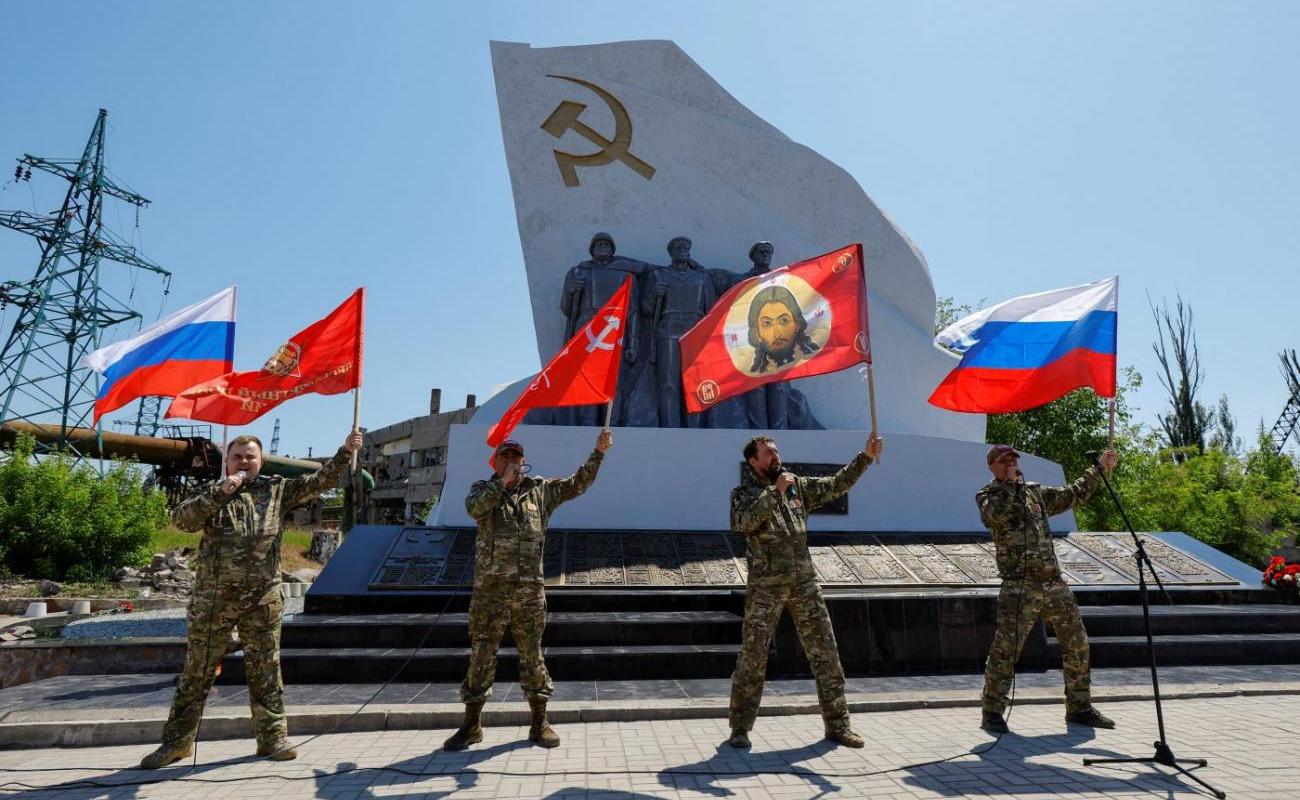Russia’s Occupiers Steal Homes, Hearts, and Minds

Since the annexation of Crimea and the start of the so-called hybrid war in Donbas, human rights activists have repeatedly warned that the occupying authorities are chasing out “disloyal” populations and replacing them with people from the Russian hinterland.
Part of this scheme for large-scale population replacement involves direct repression of those with pro-Ukrainian views alongside more indirect methods of pressure, such as campaigns to discredit Crimean professionals, question doctors’ qualifications and salaries, and chase out judges, lawyers, and other officials.
They are then replaced by Russian settlers.
In just three-and-a-half years after the 2014 annexation, 550,000 Russians and migrants from Donbas had moved to the Crimean peninsula, according to Mustafa Dzhemilev, leader of the Crimean Tatars.
The Kremlin has also been settling the occupied territories in Donbas with loyal Russians. According to local residents, workers are being dismissed en masse from companies, forcing them to leave to find jobs elsewhere, and their places are taken by newcomers from distant Siberian villages.
And since the full-scale invasion, such policies have become much harsher.
In Mariupol, in addition to the bombing and shelling which left many Ukrainians homeless, the pro-Russian administration is seizing the remaining housing from local residents by declaring properties “abandoned.”
Owners need to appear in person at the city administration to renounce their Ukrainian citizenship within a month to secure their homes. Officials will not accept any power of attorney or foreign document and only those with Russian papers can fight in the courts. Consequently, people who refuse to cut ties with Ukraine are forced to leave the city.
Most residents evacuated to Russia in 2022 cannot return. Many have been forced to live in temporary accommodation centers in Russia for months or even years, as the new housing they were promised has not materialized.
Meanwhile, people still in Mariupol say new apartment blocks have already been built on the sites of the displaced people’s homes, for which the owners have received nothing.
Kremlin propaganda is actively encouraging its citizens to invest in the destroyed city, promising rich profits as the repopulation program develops. Instructions from Kremlin officials to the media last year included a manual entirely dedicated to the material benefits of annexing new territories.
The exact number of Russians who have moved to Mariupol since the war started is unknown, but Ukrainian officials estimate it’s about 8,000 and growing.
Russian authorities are also working to reprogram Ukrainian young people in the occupied territories after Vladimir Putin personally identified ideological education as the “key link” in the so-called “new regions” of Russia.
This has been eagerly adopted by officials. Marina Peschanskaya, the ombudsman for children’s rights in occupied Sevastopol, complained, for example, that children from the Zaporizhzhia and Kherson regions had been “brought up with hatred for Russia,” and “it is necessary to work with them to reformat their thinking.”
Alongside existing ideological indoctrination programs for children across Russia, a special project called “Childhood Navigators” has been created for the occupied regions.
Schools in the Donetsk, Luhansk, Zaporizhzhia and Kherson regions now have advisors on ideological education embedded in their principals’ offices. Alexander Kudryashov, director of the Russian Youth Center, described their work as “raising the bar of patriotism, forming school communities, volunteer squads, creating military-patriotic clubs and opening branches of the ‘Yunarmiya’ and the Children’s and Youth Movement.”
Branches of Yunarmiya — a Moscow-funded paramilitary youth movement focused on training up future servicemen and women — have been operating in occupied Ukraine since 2014, and their activities have expanded since 2022.
About 40,000 children and adolescents in the occupied territories have already joined the organization, according to open data, with human rights activists saying more than 27,000 are in Crimea.
Yunarmiya members engage in drill, combat, and sports training, study weapons, and prepare for service in the Russian army. It has been reported that some young Ukrainians, having gone through the Yunarmiya, are already fighting against their homeland in the ranks of the Russian army.
The best-performing children are hand-picked to be taken to “Sirius,” an elite Russian educational center, where they are indoctrinated in “military-patriotic education.”
Kyiv considers the involvement of children from occupied Ukraine in Yunarmiya as a violation of the laws and customs of war. In June, the Security Service of Ukraine (SBU) announced that it suspects Sergey Gavrilchuk, head of the Yunarmiya in annexed Crimea, of war crimes.
Russia is planting the seeds for a new population and the forced indoctrination of the young. One day, it may provide serious problems for Ukrainian liberation forces.
Kseniya Kirillova is an analyst focused on Russian society, mentality, propaganda and foreign policy. The author of numerous articles for CEPA and the Jamestown Foundation, she has also written for the Atlantic Council, Stratfor and others.
Europe’s Edge is CEPA’s online journal covering critical topics on the foreign policy docket across Europe and North America. All opinions are those of the author and do not necessarily represent the position or views of the institutions they represent or the Center for European Policy Analysis.
